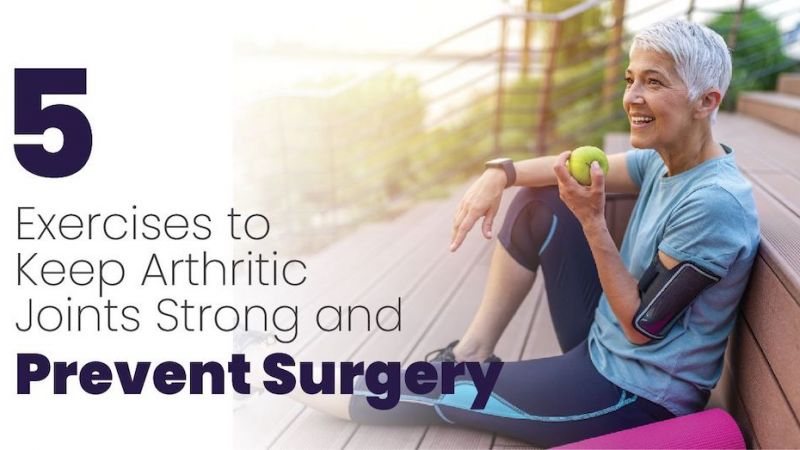If you struggle with joint pain, the last thing you may want to do is exercise. However, certain exercises actually help keep arthritic joints strong and prevent surgery. Researchers from the University of California-San Diego School of Medicine, say that just 20 minutes of exercise can help reduce inflammation.
As much as you may want to limit your movement due to pain, sitting still is not the answer, and in fact it actually worsens joint pain over time. We’re providing some tips and exercises to help motivate you or your loved ones to add 20 minutes of exercise a day, for the health of your joints. Here are a few reasons why moving the body is crucial to treating arthritis—and some easy exercises to add to your routine.
Exercise 1: Lying Leg Lifts
This exercise works the quadriceps, hip flexors, and core muscles. It can be done anywhere by lying on a bed or floor.
1. Lie flat on your back with your knees bent and feet flat.
2. Extend one leg out flat on the bed with your foot flexed and toes toward the ceiling.
3. Lift your leg up past a 45-degree angle, engaging the muscles along the front of the thigh.
4. Hold one count at the top and slowly lower. Try to isolate the movement to just the leg, keeping your hips and body flat.
5. Continue with 15 repetitions. Repeat on the other leg. Complete 3 sets of 15 leg lifts on each leg.
Exercise 2: Sitting Leg Extensions
Strengthening your quadriceps improves joint stability and allows for better movement in everyday life.
1. Sit on a chair or table with your knee crease slightly over the edge.
2. Extend one leg out straight, squeezing the thigh muscles at the top of the movement.
3. Bend your knee all the way, past a 90-degree angle, if able, like a controlled swing.
4. Continue this movement for 20 repetitions. Repeat 20 repetitions on the other leg.
Exercise 3: Wall Squats with Stability Ball>
1. Place a large stability ball against a wall and lean against the ball, resting it in the small of your back.
2. Place feet hip-width apart, approximately 2 feet away from the wall. Roll your shoulders back and look straight ahead.
3. Slowly lower yourself down into a seated position, not lowering past a 90-degree angle.
4. Squeeze your glutes and bring yourself back into a standing position, maintaining contact with the ball.
5. Repeat 15 times, rest, and repeat 3 sets of 15 wall squats.
Exercise 4: Standing Hamstring Curls
1. Stand and face a wall or chair to hold on for balance. Place your feet hip-width apart. Stand tall with your gaze forward.
2. Bend one leg at the knee, bringing your foot up toward your buttocks. Don’t let your body rock back-and-forth as you do this movement.
3. Repeat 20 times on each side.
Exercise 5: Seated Hip Abduction
1. Sit on the edge of a chair with your back straight, feet together, and hands on your thighs.
2. Tie a resistance band or place a resistance loop band around your thighs just above the knee. There are various types and strengths of resistance bands. Consult VeryWellFit for recommendations.
3. Bring your knees out to the side, squeezing through the outer glutes to initiate the movement.
4. Repeat 20 repetitions. Repeat for 3 sets.

